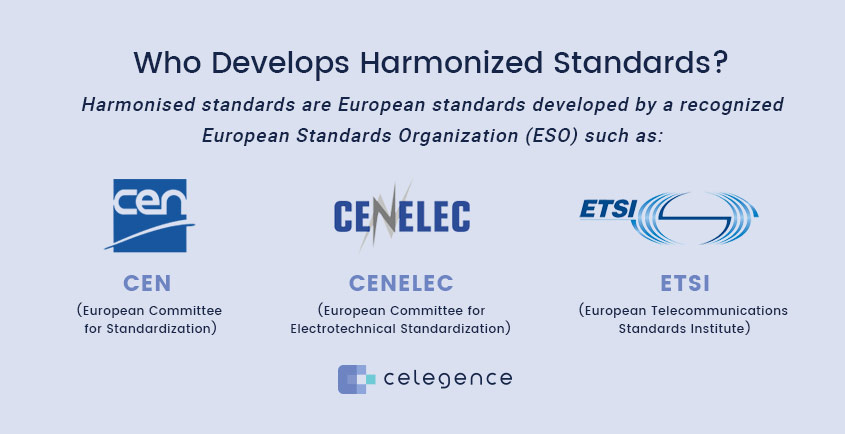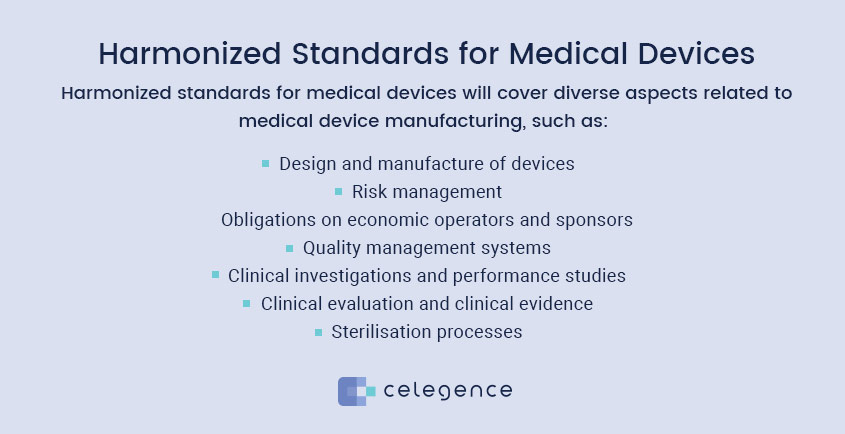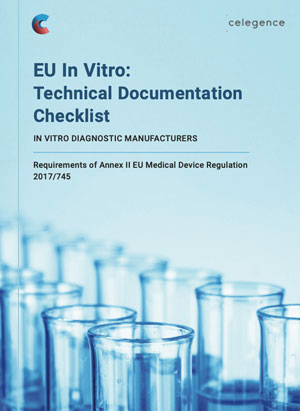
Harmonized Standards for Compliance to MDR and IVDR
The International Standards Organization (ISO) develops technical documents that provide guidance and specify the requirements for processes, equipment, workmanship, and criteria to the industry. These standards are referred to as the International Standards, or ISO standards. In the medical device industry, we commonly use many ISO standards, particularly ISO 13485: the medical device standard, or ISO 14971: 2019, the Risk Management standard. The advantage of using standards is proven – they bring in consistency, precision, and control to device manufacturing, leading towards safe and efficacious devices performing as intended.
What are Harmonized or EN Standards?
We often come across standards with the abbreviation “EN” e.g., EN ISO 13485: 2016 or EN ISO 14971: 2012. These are ISO standards that are adopted by the European Commission and harmonized currently to the requirements of the European Directives and thus, are called harmonized standards. With the introduction of the new regulations for medical devices, these standards are now being harmonized to the new regulations. The abbreviation “EN” is derived from the term ‘European Norm.’ Likewise, there are other region-specific standards such as the BS EN standards (harmonized to British regulations) or the IS EN standards, which are the Irish standards.
The harmonized standards carry Annex Z, which identifies all the contents of the standard that cover the requirements of a Directive or the Regulation entirely, or partially.
EN ISO 13485:2016 is now harmonized to the MDR and IVDR, and so are the symbols standard (EN ISO 15233-1:2021), along with some other standards.
The checklist highlights all of the documentation that you will need in place for certification of your IVD device and will serve as a guide to help you achieve ongoing compliance. In conjunction with this checklist, we are also able to provide you with bespoke strategies to bring your business up to speed. We are currently working with businesses from the United States, India, and throughout Europe to ensure that they are ready for the deadline in May of 2022.
Who Develops Harmonized Standards?
Harmonised standards are European standards developed by a recognized European Standards Organization (ESO) such as:
- CEN (European Committee for Standardization)
- CENELEC (European Committee for Electrotechnical Standardization)
- ETSI (European Telecommunications Standards Institute)

Why are Harmonized Standards Developed?
The European Union (EU) was established with the objective of setting up a single market to facilitate trade, allowing it to happen freely within the member states participating in the EU. For this, the products needed to be standardized and regulations needed to be harmonized across the member states. Harmonized standards were developed for products, processes, systems, and services carrying guidance, requirements, and recommendations from globally recognized standards like ISO and IEC.
The European Commission requests the European Standards Organisations to create different standards to support manufacturers and other stakeholders, such as other economic operators or conformity assessment bodies. This is done to demonstrate that products, services, or processes conform to their relevant EU legislations. The Official Journal of the European Union (OJEU) officially declares the release of a harmonized standard, after which, they can be applied.
A MDCG (Medical Device Coordination Group) guidance document – MDCG -2021-5: “Guidance on Standardisation for Medical Devices” was published in April 2021, which provides guidance on varying aspects for the various existing directives as well as the more recently introduced regulations like the MDR and IVDR.
Application of Harmonized Standards
The MDR and IVDR recognize and explicitly state that using harmonized standards should be a means for manufacturers to demonstrate conformity with the general safety and performance requirements and other legal requirements, such as those relating to quality and risk management.
The Technical Documentation aspect that is detailed in Annex II of the IVDR requires that a List of Harmonized Standards or Common Specifications be included and applied to show compliance to the GSPRs.
However, the use of harmonized standards is voluntary. With that said, using them provides a great advantage to manufacturers and other stake holders. During conformity assessments of products, notified bodies will presume conformity to the regulation if the manufacturer develops products that show conformity to harmonized standards or to applicable parts of the standards. This also applies to the systems and processes. Consequently, harmonized standards play a critical role in the conformity assessment process towards CE marking of products.
In fact, the European Commission’s primary objective of developing harmonized standards is to support manufacturers in demonstrating compliance to legal and regulatory requirements in the GSPRs. The European Commission expects that the harmonized standards include detailed technical specifications and their correspondence to the requirements described in the EU MDR and IVDR (Annex Z).
Harmonized Standards for Medical Devices
Harmonized standards for medical devices will cover diverse aspects related to medical device manufacturing, such as:
- Design and manufacture of devices
- Risk management
- Obligations on economic operators and sponsors
- Quality management systems
- Clinical investigations and performance studies
- Clinical evaluation and clinical evidence
- Sterilisation processes
Although the use of most harmonized standards is voluntary, there are some exceptions where they are mandatory, e.g., the symbols and identification colours standards. It is voluntary to apply these standard, and manufacturers can chose to utilize other routes to show compliance, these can include:
- Using other non-harmonized European standards or standards harmonized to the directives
- Relevant international consensus standards like ISO, IEC, or ASTM
- National standards like ASQ or ANSI
- Manufacturers’ own alternative procedures and tests, provided these solutions demonstrate that they are adequate to comply with the legal requirements applicable to the product

Harmonized Standards and State-of-the Art
Harmonized standards are created by standards organization bodies in conjunction with industry experts, regulators, and other stake holders. Therefore, they reflect the “state-of-the-art,” which means it is generally accepted as the latest by the industry and the end users. The MDR and IVDR have specifically mentioned several times that the manufacturer must demonstrate that the device is “state-of-the-art”. By making use of these standards, the manufacturer automatically fulfils the regulations’ requirement. However, there can be situations that the latest version of a particular standard reflects state-of-the-art, but it may not be harmonized to the regulation even though the previous one is. In such a situation, which version should the manufacturer use? This sort of clarity is still missing and the notified body will have to be consulted.
Which Standards are Harmonized to the MDR / IVDR?
These standards are published in the official Journal of the EU as implementing decisions. Some examples are given below. This is not an exhaustive list. It includes the list of standards that was published in January 2022.
IVDR:
- COMMISSION IMPLEMENTING DECISION (EU) 2021/1195 of July 19th, 2021, on the harmonised standards for in vitro diagnostic medical devices drafted in support of Regulation (EU) 2017/746 of the European Parliament and of the Council.
https://eur-lex.europa.eu/eli/dec_impl/2021/1195/oj
- COMMISSION IMPLEMENTING DECISION (EU) 2022/15 from January 6th, 2022, “amending Implementing Decision (EU) 2021/1195 as regards harmonized standards for sterilisation of health care products, aseptic processing of health care products, quality management systems, symbols to be used with information to be supplied by the manufacturer and requirements for establishing metrological traceability of values assigned to calibrators, trueness control materials and human samples.”
https://eur-lex.europa.eu/eli/dec_impl/2022/15/oj
MDR:
- Commission Implementing Decision (EU) 2021/1182 of 16 July 2021 on the harmonised standards for medical devices drafted in support of Regulation (EU) 2017/745 of the European Parliament and of the Council.
https://eur-lex.europa.eu/eli/dec_impl/2021/1182/oj
- Commission Implementing Decision (EU) 2022/6 of 4 January 2022 “amending Implementing Decision (EU) 2021/1182 as regards harmonised standards for biological evaluation of medical devices, sterilisation of health care products, aseptic processing of health care products, quality management systems, symbols to be used with information to be supplied by the manufacturer, processing of health care products and home light therapy equipment.”
Harmonized Standards for MDR / IVDR – Conclusion
Harmonized standards are the preferred tools for manufacturers since they can leverage them to demonstrate the state-of-the-art and show conformity to the European directives/regulations for medical devices. With the roll out of the MDR and IVDR, more and more standards are being harmonized and can be applied so as to make compliance easier for all. To reference the MDCG guideline, “harmonized standards generally allow manufacturers and other sectorial actors (including notified bodies and national competent authorities) to make easier, quicker, and less burdensome the processes related to conformity assessment procedures.”
The checklist highlights all of the documentation that you will need in place for certification of your IVD device and will serve as a guide to help you achieve ongoing compliance. In conjunction with this checklist, we are also able to provide you with bespoke strategies to bring your business up to speed. We are currently working with businesses from the United States, India, and throughout Europe to ensure that they are ready for the deadline in May of 2022.



